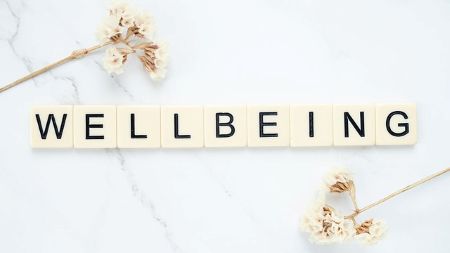Making Wellbeing More Than a Poster
This is part of a special series for Foyht: Building Resilient Teams in High-Stress Environments, practical guidance for practitioners, clinic owners and small business leaders navigating the emotional, physical, and cultural demands of the wellbeing industry.

Written by HR Consultant Samantha Newton, the series explores how we can move beyond burnout, embed real resilience, and create workplaces that protect the people doing the healing, not just the clients they serve.
Here’s the Honest Truth: Values Are Easy. Habits Are Hard.
Every clinic I’ve ever worked with says they care about wellbeing. It’s on the wall. It’s on the website. It’s in the mission statement.
But here’s the question I always ask:
“Can your team see those values in your day-to-day decisions?”
Because if your team sees “flexibility” on the wall but gets side‑eyed for leaving early to pick up a child, that’s not a value.

If “we care about mental health” is in the induction pack, but there’s no time for breaks or emotional debriefs, that’s not support. That’s decoration. Not culture.
Let’s be clear…
Wellbeing isn’t what you say.
It’s what you do, repeatedly, when things get busy.
From Posters to Practice: Why It Fails
In the past five years, I’ve seen dozens of well-meaning clinics create wellbeing “initiatives” that never really land. Why?
- They’re rolled out with fanfare… then quietly abandoned
- They rely on individuals to lead them, without structure
- They don’t match the actual pressures people face
- They don’t involve staff in shaping them
So here’s the challenge: how do we move from wishful thinking to embedded, everyday action?
The Cycle of Real Culture Change
True cultural change happens in four stages. Miss one, and it fizzles.
1. Clarity
What do you actually mean by “wellbeing”?
If it’s just “don’t burn out,” that’s not enough. Define it in your own terms — with your people.
Start with this: “A well workplace is one where people feel safe, supported, and able to recover.”
2. Co‑creation
Ask your team: what does good look like?
Involve them in building your approach. Ask:
- When are you most energised at work?
- What makes you feel safe in a team?
- What drains you unnecessarily?
Resilience is personal. So personalise your systems.
3. Consistency
One wellbeing day a year doesn’t cut it.
Daily habits do:
- Five minutes for reflection after intense sessions
- A rota that includes rest
- Weekly 1:1s where wellbeing is always on the agenda
- Lunch breaks that aren’t “optional extras”
Your people should feel the culture, not just hear about it.
4. Challenge
Hold each other to account. Not aggressively. But truthfully.
If someone’s always skipping their break, ask why.
If a manager constantly pushes through illness, talk about it.
If you keep telling others to rest but haven’t taken a full day off in six months, start with yourself.

Culture doesn’t live in posters. It lives in the decisions you make when you’re stressed, short-staffed, or under pressure. That’s when your team learns what you really value.
“I used to think wellbeing was on me. Now I know it’s built into how we work.”
– Clinic Assistant, anonymous team feedback
Mini Pause:
This isn’t about perfection.
It’s about not making people cry in the car park.
Case in Point: The One-Page Wellbeing Map
One clinic I support created a “Wellbeing Map”, not a long policy, but a single-page living document shaped by the team. It included:
- Agreed break standards (and who covers when needed)
- Emotional check-in time every Friday
- Red flags to watch for (e.g., repeated lateness, fatigue, friction)
- Who to go to when you’re not okay
- The clinic’s definition of “enough”
It’s reviewed quarterly, shaped by feedback, and posted in the staff room, not to perform, but to remind.

They didn’t need a new HR system. They needed ownership. And honesty.
Back It Up: When Talk Isn’t Enough
A 2024 Deloitte UK report found that only 38% of employees believe their organisation’s wellbeing values are visible in daily life, despite 88% of companies claiming to prioritise mental health.
That gap? It’s trust.
And trust takes consistency.
No More Fruit Bowls & Fluffy Fridays
Let’s not confuse performative perks with actual support.
What wellbeing isn’t:
- “Flexible working” that’s never approved
- A mindfulness poster while people skip breaks
- Sending people home with chocolate instead of shifting their caseload
What wellbeing is:
- Adjusting the way you work, not just rewarding people for burning out
- Creating environments where people feel they can breathe
- Embedding emotional recovery as part of performance, not a threat to it
How to Start – This Week
Pick one:
✅ Add “how are you really?” to every 1:1
✅ Block 20 minutes of post-session reset time
✅ Ask your team: What’s one thing we do that makes your work harder than it needs to be?

Start small. Stay consistent. Culture is changed one conversation at a time.
Coming soon: A free “Culture in Action” checklist, practical prompts for embedding wellbeing into how your clinic actually runs. Want it? Connect with me on LinkedIn.
Let’s Connect
If you want to turn your values into workplace habits, not wallpaper, let’s talk.
Main – Photo by fauxels





